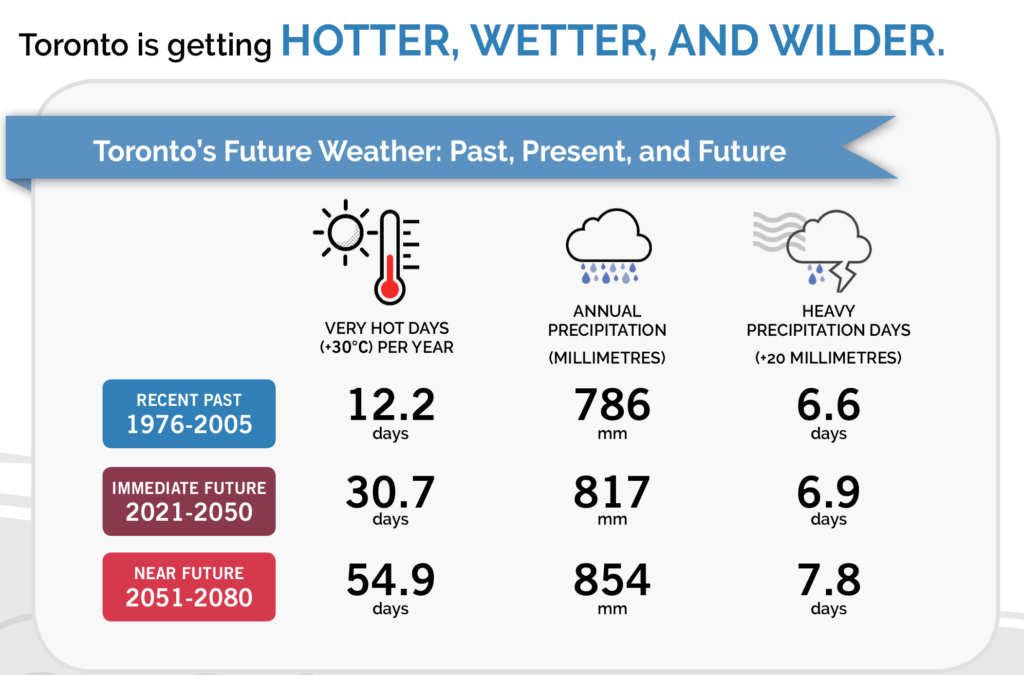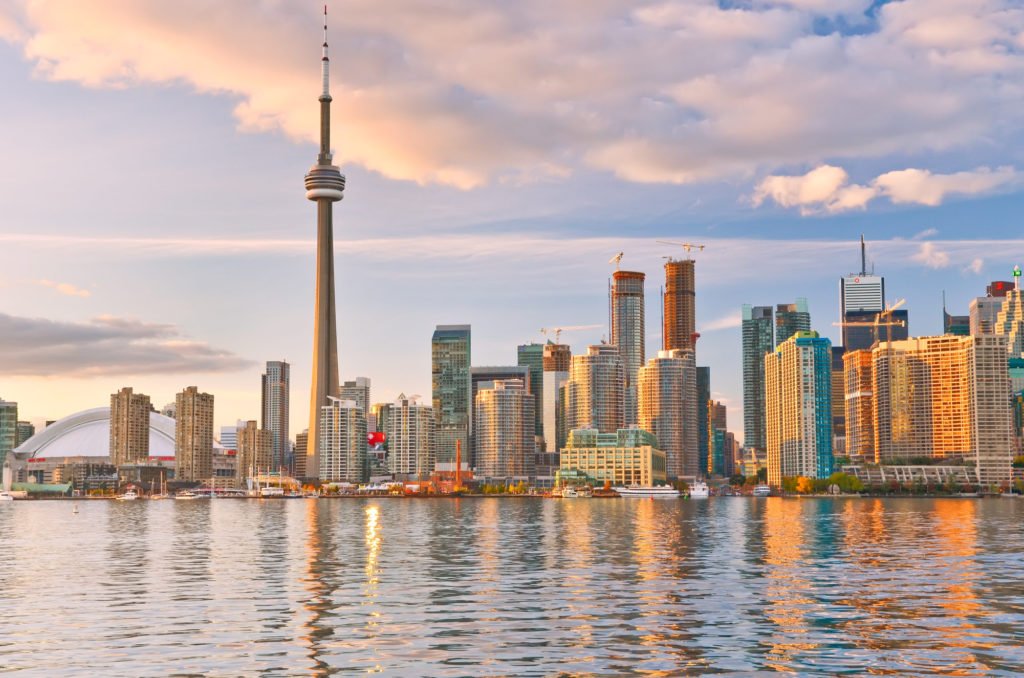The City of Toronto released its first Resilience Strategy earlier this month. The strategy sets out a vision, goals, and actions to help Toronto survive, adapt and thrive in the face of any challenge, particularly climate change and growing inequities.
Recognizing that true resiliency is more than keeping the lights on during extreme weather, the city’s plan is ambitious in scope, tying in poverty reduction, green infrastructure development and civic engagement.
The strategy has 10 goals and 27 action items categorized in three focus areas: people and neighbourhoods, infrastructure, and leadership. It is a culmination of two years of work funded by the Rockefeller Foundation’s 100 Resilient Cities program. It was developed through engagement with 8,000 residents, 75 partner organizations, and builds off of 40 existing city strategies.
In several instances, the strategy recognizes that the city can’t achieve ‘full resilience’ alone and requires wider support from other levels of government and society at large.
YMCA of Greater Toronto a leader in resilience but how to replicate?
The 159-page document references the YMCA of Greater Toronto for their work to “increase community resiliency and protect vulnerable populations.” The YMCA, with support from Mantle, developed its own comprehensive Climate Resilience Strategy in 2018.
Through their strategy, the YMCA is working to turn existing and new YMCA Health and Fitness Centres into Community Resiliency Centres. During times of emergency, such as extreme weather events that might lead to power outages or uninhabitable residences, the centres will be able to act as emergency community reception centres – safe places in which residents can seek shelter, stay warm (or cool), charge their devices, and receive emergency support. The YMCA is installing high-efficiency power generation equipment throughout its portfolio including solar panels and energy storage systems.
The Resiliency Strategy seeks to replicate this success and calls for building additional resilience support with local partners, academia, industry and community members, but does not lay out a clear path to broader uptake. The Y’s activities have been home-grown; how can the city and other levels of government encourage, coordinate and support other organizations to follow their lead?
Realizing wide-scale apartment tower retrofits a major challenge
The city recognized that it can play a lead role in moving forward with the retrofit of aging apartment towers – defined in the strategy as the “single most pressing, urgent priority for the city’s resilience.”
The city has some 500,000 residents living in towers with out-of-date heating systems and windows, of which 94 per cent don’t have air conditioning. Most towers do not have back-up power to allow sheltering in place during prolonged power outages and can become unbearable during extreme heat events, which are expected to become more frequent and severe in the future.
Toronto’s future weather is expected to grow increasingly “hotter, wetter, and wilder” according to data provided by the Climate Atlas and cited in the Resiliency Strategy. Extreme heat days (above 30°C) will increase from 12 per year in the recent past to 54.9 beyond 2050. Over that same period, extended heat waves are expected to greatly increase. Last year, more than 90 deaths were linked to a week-long period of extended heat in Quebec – a similar tragedy can be reasonably expected in Toronto without significant action. These statistics make it clear that we must address this critical supply of housing to be more resilient in our expected future climate.

Toronto runs an incentive program for tower retrofits, however the Resiliency Strategy notes that deep retrofits to make buildings low-carbon and resilient are currently “not economic for private building owners” and to change that would require the involvement of the federal and provincial governments.
The strategy proposes a useful action: the federal government could change “the Capital Cost Allowance tax classification for deep retrofits to align with other GHG-reducing incentives, like those for electric vehicles”. This change could fundamentally improve the business case for retrofits.
The recently released Final Report of the Expert Panel on Sustainable Finance suggests two additional recommendations to kick-start retrofits in small- and medium-sized buildings. The first recommendation is for the government of Canada to retrofit government buildings to drive down the cost to retrofit – to reduce the “commercialization gap.” The second recommendation is to help kick-start regional green banks to finance deep retrofits that are largely ignored by the private sector.
The government of Ontario previously launched a green bank with funds from the Cap and Trade program; however, both were cancelled after last year’s election. A new and different green bank is now being proposed by the Ford government. Although establishing of a new green bank is encouraging, policy consistency and market certainty are key pillars to ensure the retrofits will move forward.
Flood mapping tool a welcomed step
Toronto has experienced several major flooding events in the last decade. A 90-minute 2013 storm flooded 5,000 homes and was the most expensive disaster in Toronto’s history. Similar events are expected to be more frequent and intense in the coming decades.
The strategy re-commits to the development of a much-needed and overdue flood plain mapping tool to help guide smatter construction strategies and land use planning decisions.
The proposed tool will account for topography, sewer capacity, critical infrastructure and vulnerable populations. It will be used for planning, infrastructure prioritization, emergency management resources, and communicating with the public to encourage at-risk residents to act.
Increased knowledge about risks facing residents, and what they can do about it, is critical. Three out of four homeowners who live in high-risk flood zones aren’t aware, according to a University of Waterloo study. “Fewer than 10% of eligible households take advantage of subsidy programs designed to increase uptake of lot-level urban flood protection measures,” according to a 2017 report by the Institute of Catastrophic Loss Reduction.
To counter-act this barrier, the city has partnered with the Insurance Bureau of Canada, and the Intact Centre on Climate Change Adaptation at the University of Waterloo to deliver the Home Resilience Pilot. The pilot worked directly with 157 homeowners to understand their flood risk and implement mitigation measures. The city is looking to scale up the pilot, but requires provincial support, the report says.
The release of Toronto’s first Resilience Strategy is an important milestone that should be applauded, but in areas where climate shocks – including heatwaves and floods – will become more frequent, the city will need all hands on deck (the province, the federal government, the private sector, and engaged residents) to achieve its goals and protect its citizens from the hotter, wetter, and wilder future on the horizon.

